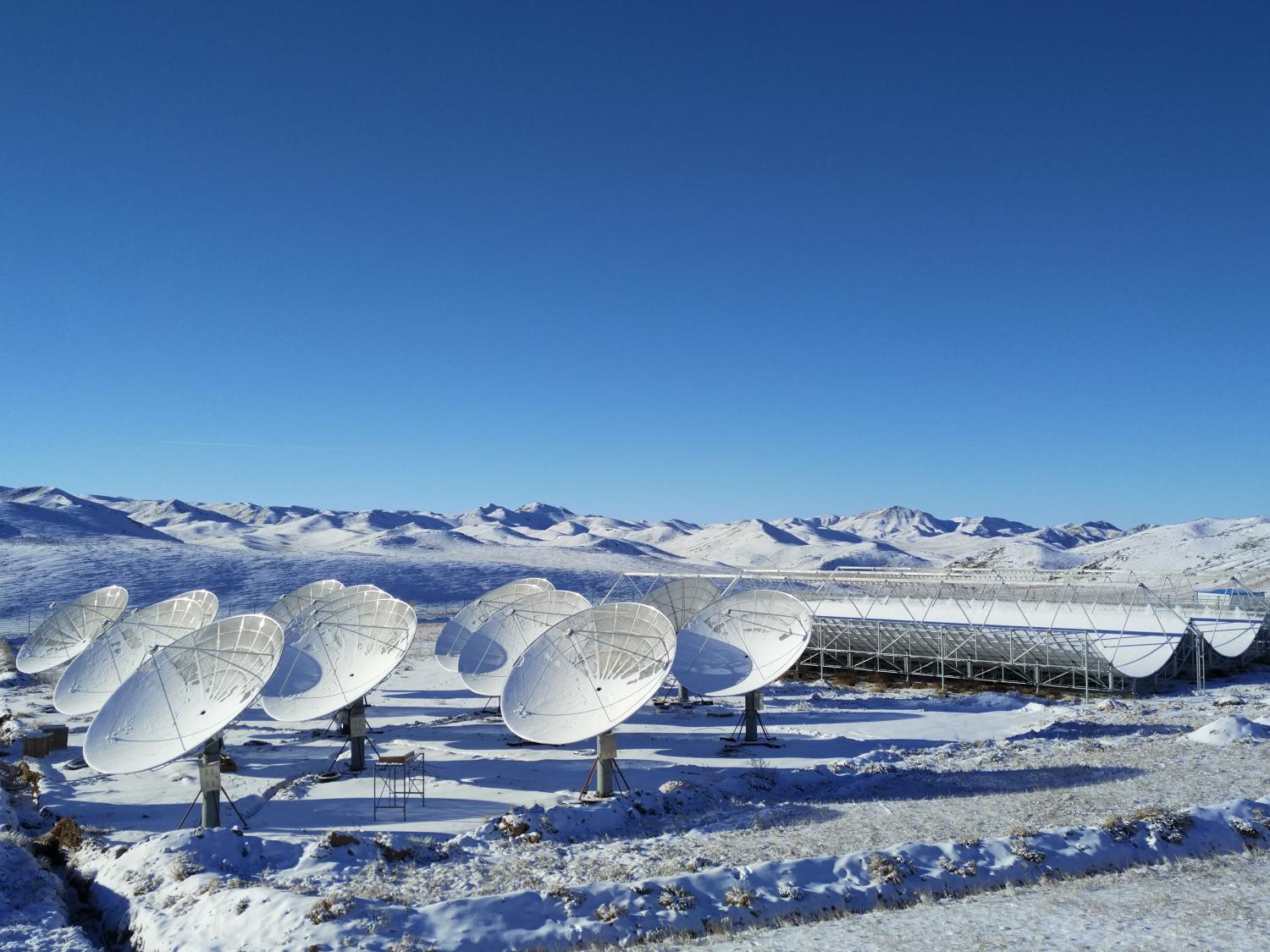Precursors & Pathfinders
All major science endeavours build upon the advances made by those that have come before, the decades of experience and knowledge from existing facilities which help to pave the way for the next generation.
For the SKAO, a global family of precursor and pathfinder facilities has been a crucial part of the road to construction and operations. Their science studies and technology innovations have informed the design and development of the SKA telescopes, and they have trained a new, more diverse generation of astronomers, engineers and technicians.
The Precursors
The four SKA precursor telescopes are located at the SKA sites: MeerKAT and HERA in South Africa, and the Murchison Widefield Array (MWA) and ASKAP in Australia. They have provided the SKAO's scientists and engineers with invaluable knowledge to assist the development of the SKA telescopes, from design details to operations planning.
All four are already carrying out scientific studies related to future SKAO activities, as well as helping to test new crucial technologies which will be used by the SKA telescopes in the near future. Uniquely among the precursor and pathfinder telescopes, South Africa's MeerKAT will ultimately form part of the SKA-Mid telescope.
Learn more about each facility by clicking on the images below.
The Pathfinders
Pathfinder telescopes and systems are dotted around the globe and are engaged in SKA-related technology and science studies. They are allowing astronomers to develop improved techniques and explore new phenomena, and are churning out ground-breaking science at an astonishing rate: from a sharp rise in the detection – and, in some cases, localisation – of fast radio bursts using ASKAP, CHIME, FAST, e-MERLIN and other pathfinders, to a new way to study exoplanet environments thanks to LOFAR, and the detection of atomic hydrogen content of galaxies seen as they were eight billion years ago (the earliest epoch in the Universe for which there is such a measurement) using upgraded GMRT, to name just a few examples. At the same time, these telescopes allow engineers to develop new technical and innovative solutions which will benefit the SKA telescopes.
Overall, these facilities are also playing a key role in training a new and more diverse generation of astronomers, engineers and technicians who will be ideally placed to make use of the SKA telescopes but also contribute to building a knowledge society.
The knowledge and experience gained by the precursor and pathfinder telescopes will guide the SKAO through construction and operation, and will be at the heart of a productive and groundbreaking use of the SKA telescopes in the years to come.


























